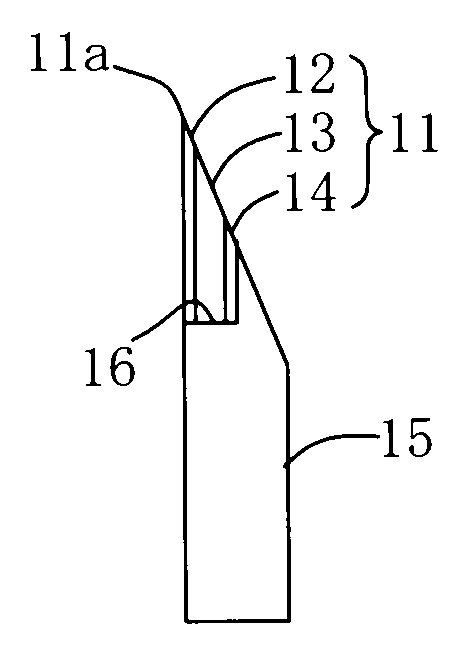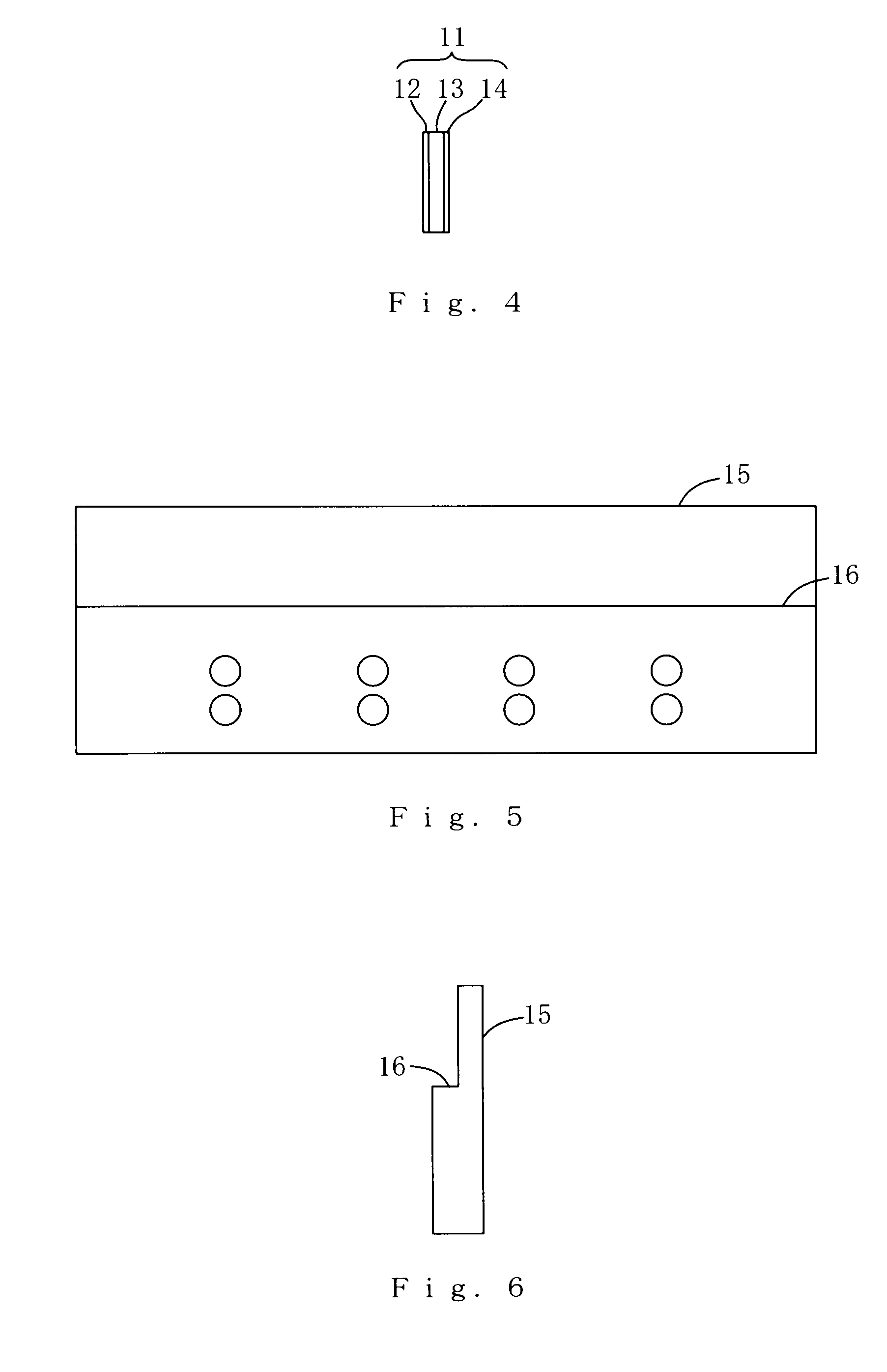Flat cutting tool
a cutting tool and flat technology, applied in the direction of manufacturing tools, soldering devices, saw chains, etc., can solve the problems of increasing material costs, affecting cutting properties such as rigidity and abrasion resistance of cutting tools, and difficult to control uneven thickness of surface layers, etc., to achieve a higher the effect of high degree of precision and stability
- Summary
- Abstract
- Description
- Claims
- Application Information
AI Technical Summary
Benefits of technology
Problems solved by technology
Method used
Image
Examples
Embodiment Construction
[0022]Hereinafter, one embodiment of the present invention will be described with reference to the drawings. FIGS. 1 and 2 are a front view and a side view of a flat cutting tool used as a cutter blade for cutting superposed sheets of paper in bookbinding according to the embodiment. FIGS. 3 and 4 are a front view and a side view of a blade member, and FIGS. 5 and 6 are a front view and a side view of a base member. The flat cutting tool 10 is formed by fixing a blade member 11 which is a rolled steel plate to a mounting concavity 16 of a base member 15 which is a thick plate made of an ordinary steel, using a brazing filler metal or an adhesive agent, to form a cutting edge 11a on the surface layer 12 side of the blade member 11.
[0023]The blade member 11 is a thin rolled steel plate having a long rectangle shape which is formed by joining a surface layer 12 of a high-speed tool steel with a high degree of hardness, a middle layer 13 of an alloy steel which has a lower quench-harden...
PUM
| Property | Measurement | Unit |
|---|---|---|
| thickness | aaaaa | aaaaa |
| thickness | aaaaa | aaaaa |
| thickness | aaaaa | aaaaa |
Abstract
Description
Claims
Application Information
 Login to View More
Login to View More - R&D
- Intellectual Property
- Life Sciences
- Materials
- Tech Scout
- Unparalleled Data Quality
- Higher Quality Content
- 60% Fewer Hallucinations
Browse by: Latest US Patents, China's latest patents, Technical Efficacy Thesaurus, Application Domain, Technology Topic, Popular Technical Reports.
© 2025 PatSnap. All rights reserved.Legal|Privacy policy|Modern Slavery Act Transparency Statement|Sitemap|About US| Contact US: help@patsnap.com



